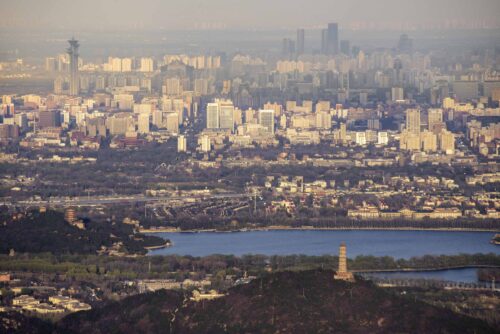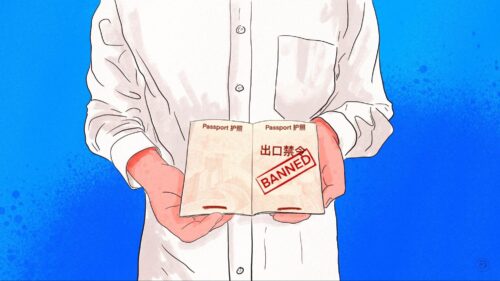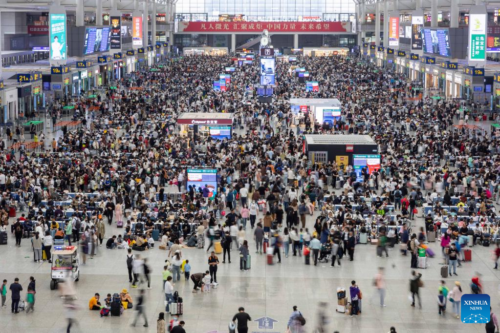Dunhuang — a brief history and travel guide to China’s Silk Road oasis
An introduction to the ancient history of the Mogao Buddhist cave temples and recent efforts to preserve them for posterity.


Dunhuang, an oasis on China’s ancient Silk Road, is situated in the northwest of China, where the Gobi Desert and the far eastern edge of the Taklamakan Desert region meet in Gansu Province. Once an important stop on the trade routes that connected China and Central Asia, it is now a vestige of the Silk Road, where caravanserai teamed with merchants and Bactrian camels, the economy boomed and Buddhism flourished. More than anything, though, Dunhuang has become synonymous with one of the world’s most spectacular cultural sites — the Mogao Buddhist cave temples.

This UNESCO World Heritage site is testimony to a thousand years of rich cultural and artistic exchanges, Buddhist devotion, wealth and patronage. From the fourth to the 14th century, Dunhuang evolved into a crossroads of humanity thanks to its strategic geographic position. The Mogao caves, located 16 miles (25 km) outside of the oasis of Dunhuang, became a visual repository of the religious, artistic, economic, political and social life of the region, illustrated in wall paintings, portrayed in sculptures, and reflected in objects and documents found inside the caves.
Prior to the recent flourishing of tourism in Dunhuang, the caves had been long forgotten after the 14th century, mainly because the land trade routes shifted to sea routes. Then, in the early 20th century, Dunhuang was back on the map again. Archaeologists, art historians and explorers became the ideal agents for the British and Russians engaged in The Great Game of vying for power in Central Asia, especially in the Taklamakan Desert region. A race ensued to rediscover the “lost” Buddhist oases kingdoms surrounding the northern and southern periphery of this desertscape that reads like a movie script. Indeed, the intrigue and adventures are brought to life in Peter Hopkirk’s book Foreign Devils on the Silk Road.

Of all the excavated sites and unearthed objects on the Silk Road, Mogao was the greatest treasure. This extraordinary site comprises 492 man-hewn caves decorated with vibrant murals and sculptures, and an additional 248 undecorated caves that were used as living quarters for the Buddhist clergy and artists. Due to the dry climate and because it was all but forgotten, the wall paintings and sculptures have remained well preserved. Hidden inside a cave was a cache of thousands of Buddhist paintings, woodblock prints, ancient Buddhist texts, documents written in languages that no longer exist, and records of daily life. They were accidentally discovered in 1900 by a self-appointed caretaker of the caves, one Taoist priest named Abbot Wang, who was eager to sell the finds from the cache to finance a refurbishing of some of the caves, which had been abandoned for centuries and had filled with sand.
The first time I visited the Mogao cave temples was in 1989. I set out on a three-month journey overland from Beijing to Pakistan, which took me to all the historical Silk Road sites northwest of Xi’an. China was opening up and the economy was developing, but it really felt like going back in time in this remote part of China, where few people traveled. Transportation was limited to very crowded coal-fueled trains, old trucks and buses. From Xi’an, it took me about two weeks to reach Dunhuang after passing through the Hexi Corridor, which forms the natural boundaries of Gansu Province, flanked by snowcapped mountains and desert.
I spent over one week in Dunhuang and ventured out to the caves daily, hitching a ride with farmers through the dry landscape, with large sand dunes in the distance. The approach to the caves is part of the magic of this place. For pilgrims in ancient times, leaving the lush oasis behind and taking a camel or donkey cart to the cave temples, which are tucked into the side of a sandstone cliff across a river, was a metaphor for leaving the material world behind and entering a sacred space.
Entering the caves was an awe-inspiring experience. Once my eyes adjusted and the decoration came into focus, it was clear that the artistry was of a magnitude beyond description. I returned for days and spent hours inside many caves, studying and admiring the craftsmanship and devotion that went into creating the cave-temple architecture, wall paintings and sculptures. The experience left an indelible mark and I returned to Dunhuang and the Mogao caves annually. They have become a beacon in my life, the topic of my graduate studies and an opportunity to contribute to the field of Dunhuang Studies.

Throughout my travels to Dunhuang in the 1990s, most visitors to the cave temples were Japanese tourists and Buddhist pilgrims. Few Americans had ever heard of the place and still haven’t. Although many Chinese were aware of the site, it was not a popular destination for them until roughly 10 years ago, when domestic Chinese tourism took off.
With large Chinese tour groups blaring megaphones inside the caves, the serene and spiritual feeling evaporated and the sheer number of people visiting the site threatened its protection. However, in 2014, the visitor experience was enhanced with a center showing two short films — one about the history of Dunhuang and another virtual, up-close, tour inside a few of the Mogao caves. Visitors are then taken to the actual site on a drive across a desolate desert area that pilgrims also crossed centuries ago. A certain number of caves are open every day on a rotating basis and a guide from the Dunhuang Research Academy accompanies visitors in small groups, using a microphone with headphones, thereby reducing noise significantly and restoring the contemplative and spiritual feeling to the cave temples.
Originally established in 1943 as the Dunhuang Art Institute, the current Dunhuang Research Academy (DRA) is responsible for the conservation, research and management of the caves. Under the auspices of Honorary Director Fan Jinshi, who has devoted over 50 years to protecting and researching the caves, the DRA has become an international, interdisciplinary organization. Fan established The Friends of Dunhuang to help raise funds and awareness of the site, initiated a collaboration with The Getty Conservation Institute and organized several on-site international conferences, one of which I attended in 1992. It was the first time scholars from around the world presented their research. I was granted access to all the earliest caves, from the fourth to the sixth century, to document my research on the Thousand Buddha motif painted in many cave temples as an integral part of cave iconography.
Regardless of the number of times I visit the caves, the approach to the site through the desert and the exhilaration of entering the caves continue to be overwhelming. Every inch of the walls is painted with Buddhist iconography as well as portraits of patrons and donors, and complemented by sculptures of Buddhist deities made of vibrantly painted clay. Mogao is an art gallery in the desert and reflects the unique fusion of Chinese, Indian, Persian and Central Asian styles and cultural exchange and, as such, is of tremendous cultural value to the world. An on-site museum sits across from the cave complex and houses an exhibition of magnificent Tibetan Buddhist sculptures as well as a display about the history and conservation of the caves.
For an even richer experience, I like to drive in the desert or ride a camel to the ruins of the Jade Gate and a 2,000-year-old section of the Great Wall. Beyond this frontier were the so-called Western Regions, inhabited by various ethnic groups. The terrain was home to many bandits and the climatic conditions were treacherous. Understandably, travelers approaching Dunhuang from beyond would have been relieved to survive the journey, while those heading out would have reason to pray at the Mogao caves for safe travels.
Aside from the Mogao caves, there are several other significant and fascinating sites in and near Dunhuang. The other beautiful but less known Yulin cave-temple site dates to the seventh century and showcases extraordinary Buddhist wall paintings that were created when China’s Silk Road was at its height during the Tang Dynasty (618-907 CE). The local Dunhuang Museum exhibits many unique objects found in and around the oasis and narrates the multicultural history of the area with objects of historical significance. Dunhuang’s lively night market is filled with Silk Road flavors — cumin lamb kebabs, coriander-infused soup noodles, and more exotic dishes such as camel hump and donkey.

A once arduous journey to reach Dunhuang is now an easy flight from Beijing, Shanghai or Xi’an and well worth a visit. Allow two to four days for time to explore, or extend your trip to five to 10 days and continue to other oases further west on China’s Silk Road. This part of China is off the beaten track and still retains its unique cultural identity.
Suggested itinerary:
Day 1: Fly to Dunhuang from Beijing, Shanghai or Xi’an.
Day 2: Spend a full day at the Mogao cave temples with an expert on Buddhist art.
Day 3: Drive out to the ruins of the Jade Gate and the Great Wall, and climb the sand dunes surrounding the oasis.
Day 4: Visit the Yulin Buddhist cave temples and the Dunhuang Museum.
Selected recommended reading
Foreign Devils on the Silk Road, by Peter Hopkirk
Life along the Silk Road, by Susan Whitfield
Cave Temples of Dunhuang: Buddhist Art on China’s Silk Road, edited by Neville Agnew, Marcia Reed and Tevvy Ball (Getty Museum exhibition catalog)
Dispatches from North-West Kansu, by Mildred Cable and Francesca French
Eighteen Lectures on Dunhuang, by Rong Xinjiang
Selected online resources
The International Dunhuang Project: The Silk Road Online
Museums around the world with artifacts from the Mogao cave temples
The British Museum, London
The British Library, London
Musée Guimet, Paris
The Hermitage, St. Petersburg
Princeton University Art Gallery, Princeton, New Jersey





